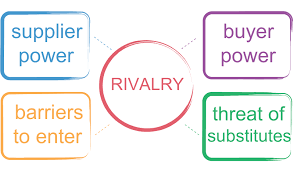 Michael Porter’s Definition of Strategy is: the creation of a unique and valuable position, involving a different set of activities.
Michael Porter’s Definition of Strategy is: the creation of a unique and valuable position, involving a different set of activities.
If your business doesn’t have a unique and valuable position, with a set of differentiating activities, you don’t have a strategy.
The best strategy avoids competing with rivals on the same dimensions. We’ll discover this through the Key Attribution Framework in our next blog.
There are several steps you need to take before this step! For this blog we’ll focus on the external steps.
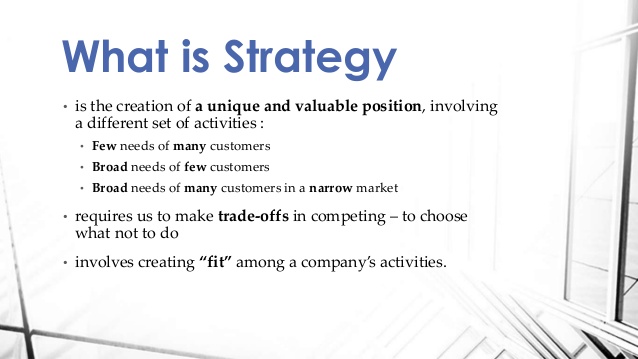 If you’re not at the $10M or more, this may not be as urgent. As Verne Harnish shares in Scaling Up, once you achieve $10M, market competition heats up. By identify your key differentiating activities you’ll increase your profit margins and create loyal customers.
If you’re not at the $10M or more, this may not be as urgent. As Verne Harnish shares in Scaling Up, once you achieve $10M, market competition heats up. By identify your key differentiating activities you’ll increase your profit margins and create loyal customers.
First let’s complete a market map of your business to identify who has the power in your marketplace.
The Market Map
The secret to successful strategy execution is deciding to put your company in the white space open in your market. The white space is where your company is in its own dimension, competing to be unique rather than to be the best.
Start by using a tool called the “Market Map” to discover who loves you, who hates you, who your biggest competitors are, and who holds the most power and leverage in the overall marketplace.
Fill in your Market Map from left to right. Draw out how you go to market (how you’re making money) on the left side, while the right side will show your supply chain (where you’re spending money).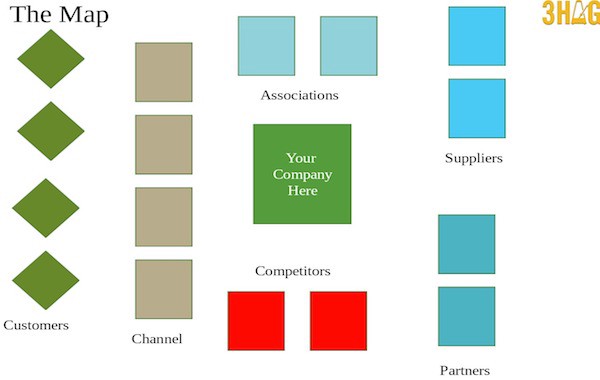
- Step One: Get a massive sheet of blank paper and a pad of sticky notes. In the middle of the sheet, draw a box and write your company’s name in it.
- Step Two: Go to the left side of the paper and, from top to bottom, draw or use sticky notes to map all the customers—or “buyers”—in your industry. (You may not be in business with these buyers yet, but if they exist in your marketplace, you need to map them in.)
- Step Three: Draw possible resellers, referrals, or secondary channels through which you might reach your customers. Channels are conduits that may (or may not) allow you to reach your customers. Even though there may be channels in your marketplace that you don’t plan on using, think of channels as players on the field. You’ve got to map them, regardless of whether you’re in direct contact with them.
- Step Four: Draw the connections (if any) between your company, your channels, and your customers. Now you’ve mapped out your relationships for the left side of the page.
- Step Five: Go to the far right of the paper and write down all the companies that supply this market—these are the places where your company spends money. Also write down the names of other suppliers with whom you may not do business but who operate in the market.
- Step Six: Draw lines to indicate your relationships with your suppliers.
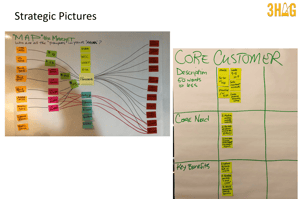 There may be suppliers in your marketplace with whom you don’t yet have relationships.
There may be suppliers in your marketplace with whom you don’t yet have relationships. - Step Seven: Draw in all your competitors. There may be competitors in the marketplace who don’t concern you, but you need to include them anyway because they exist. You and your team need to be aware of them. Their presence may change how your company does business someday
- Step Eight: Draw your competitors’ relationships to the channels and buyers in the marketplace. You want to see if your competitors’ relationships are like yours. What you’re looking for is as little overlap as possible, which would mean you’re not in direct competition with your competitors and that you’ve staked out your own white space.
- Step Nine: At the very top of the page, add all the businesses or associations (trade organizations, business groups, chambers of commerce) relevant to your company. Then draw arrows to those entities with which you have working relationships.
- Step Ten: Follow the dollar. Draw where dollars are flowing to and from your business. Make sure that you’re drawing money going in both directions to distinguish from relationships where money isn’t flowing. Then, rather than give a dollar amount for each relationship, estimate the percentage of overall dollars coming and going in each channel. Looking
I invite you to read 3HAG WAY: The Strategic Execution System that ensures your strategy is not a Wild-Ass-Guess! You’ll find these steps including specific examples Shannon Susko shares on how she built and sold three companies using this tool.
What the Market Map Reveals about Your Company
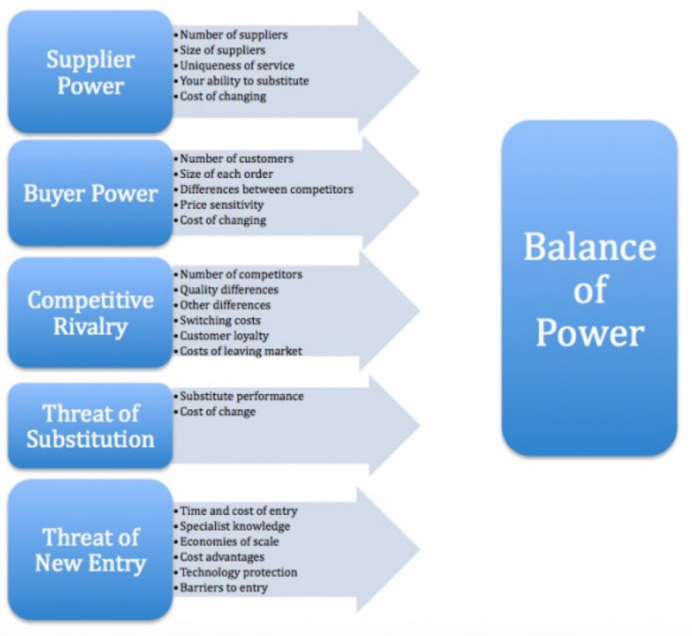 Creating an environmental map in detail of the internal and external workings of your business enables you to see who has the power in the marketplace. It ensures you put your company in a position of strength. Using Michael Porters Five Forces framework helps you see what is forcing your environment to do certain things. It provides a good view of your current position in the marketplace and supports discussion if your position needs to be adjusted.
Creating an environmental map in detail of the internal and external workings of your business enables you to see who has the power in the marketplace. It ensures you put your company in a position of strength. Using Michael Porters Five Forces framework helps you see what is forcing your environment to do certain things. It provides a good view of your current position in the marketplace and supports discussion if your position needs to be adjusted.
The goal of the Market Map is to get a good view of all these players, where your company fits in, and what actions you might need to take due to poor position. This also gives your whole team a visual understanding of where you stand, and which areas need work. Once completed, you may discover you’re surprised by the difference between what they thought your position was in the market and what it really is. Getting clear about this map is essential as you grow your company.
Make sure your Market Map is kept it up to date and visible to all.
Visit the Harvard Business School Michael Porters Five Forces of Strategy article to discover how the Five Forces Framework identifies Power in the Airline Industry.
Strategy Decisions are all about top line revenue growth! Contact us today to schedule a free exploratory meeting to get started now!
Growth demands Strategic Discipline.
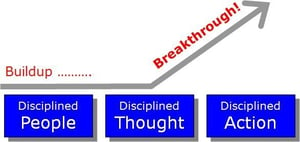 To build an enduring great organization, requires disciplined people, disciplined thought, disciplined action, to produce superior results, and make a distinctive impact in the world.
To build an enduring great organization, requires disciplined people, disciplined thought, disciplined action, to produce superior results, and make a distinctive impact in the world.
Discipline sustains momentum, over a long period of time, laying the foundations for lasting endurance.
A winning habit starts with 3 Strategic Disciplines: Priority, Metrics and Meeting Rhythms. -1.jpg?width=300&name=3%20Disciplines%20of%20Execution%20(Strategic%20Discipline)-1.jpg) Forecasting, accountability, individual, and team performance improve dramatically.
Forecasting, accountability, individual, and team performance improve dramatically.
Meeting Rhythms achieve a disciplined focus on performance metrics to drive growth.
Let Positioning Systems help your business achieve these outcomes on the Four most Important Decisions your business faces:
|
DECISION |
RESULT/OUTCOME |
|
PEOPLE |
|
|
STRATEGY |
|
|
EXECUTION |
|
|
CASH |
|
Positioning Systems helps mid-sized ($5M - $250M) business Scale-UP. We align your business to focus on Your One Thing! Contact dwick@positioningsystems.com to Scale Up your business! Take our Four Decisions Needs Assessment to discover how your business measures against other Scaled Up companies. We’ll contact you.
 NEXT BLOG – Find Your White Space - Key Attribution Framework
NEXT BLOG – Find Your White Space - Key Attribution Framework
The best action you can take is to create a strategy it to avoid competing with rivals on the SAME DIMENSIONS.
You discover this through the Key Attribution Framework. This tool helps you understand and see where the White Space is to identify 3-5 key differentiators your business will integrate so your competition can’t copy them. That’s next blog.






.jpeg?width=150&height=135&name=Hand%20with%20marker%20writing%20the%20question%20Whats%20Next_%20(1).jpeg)

